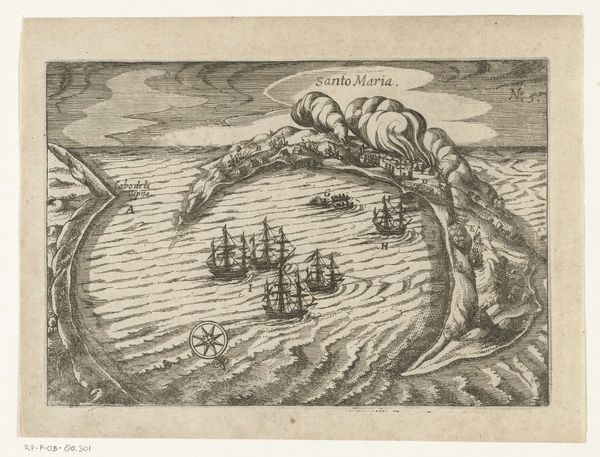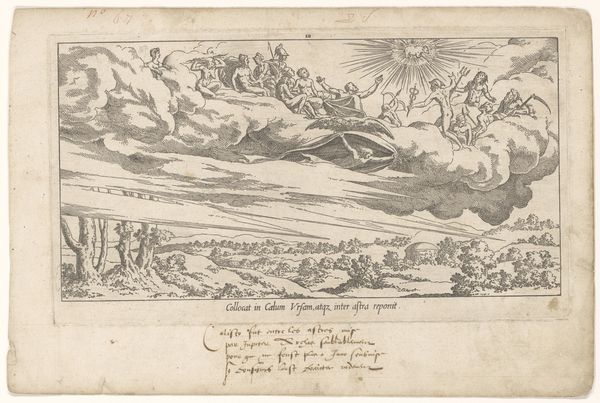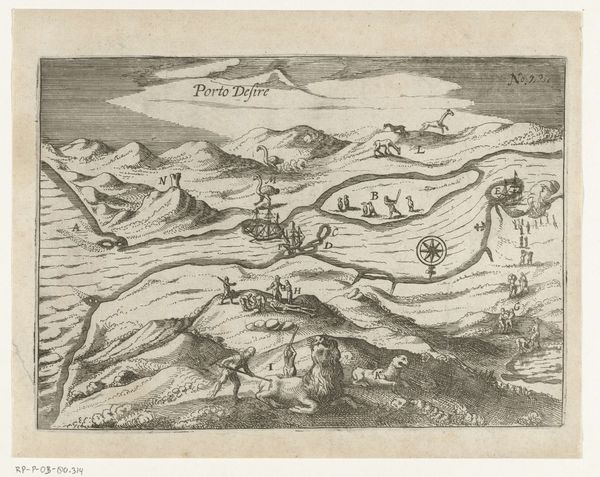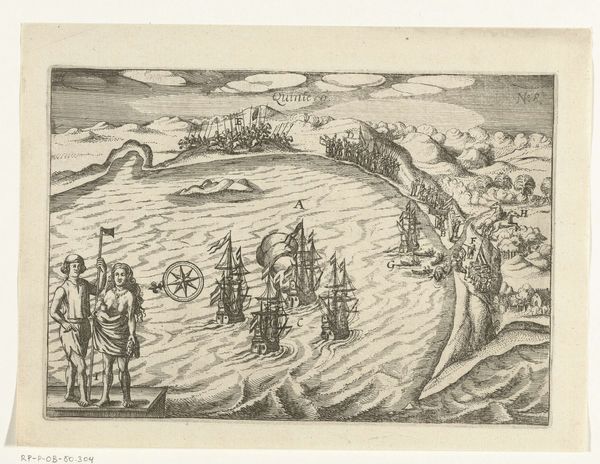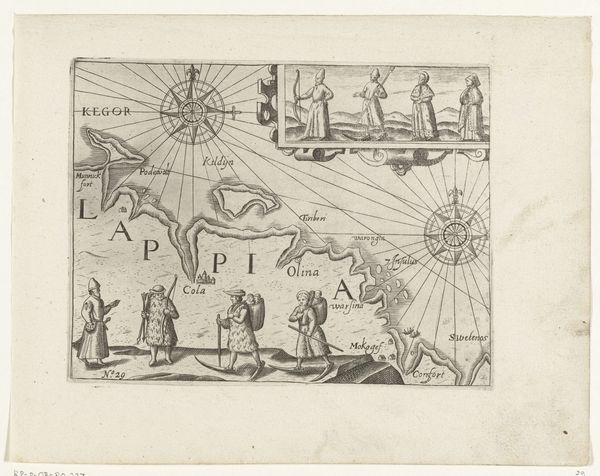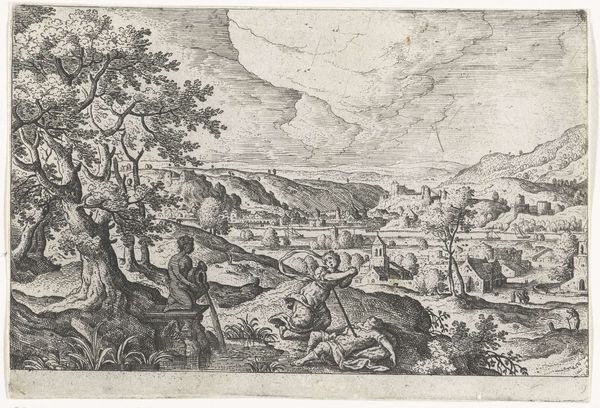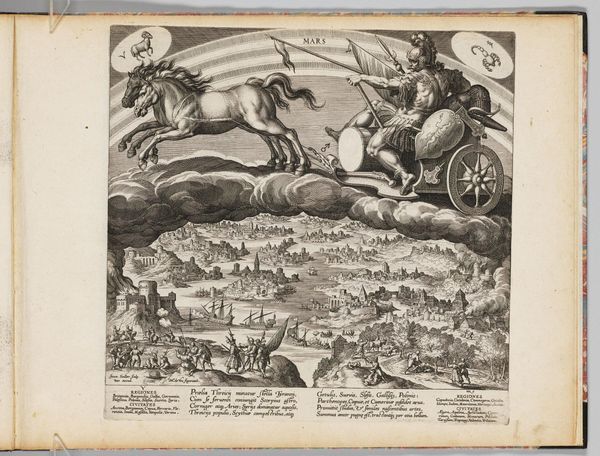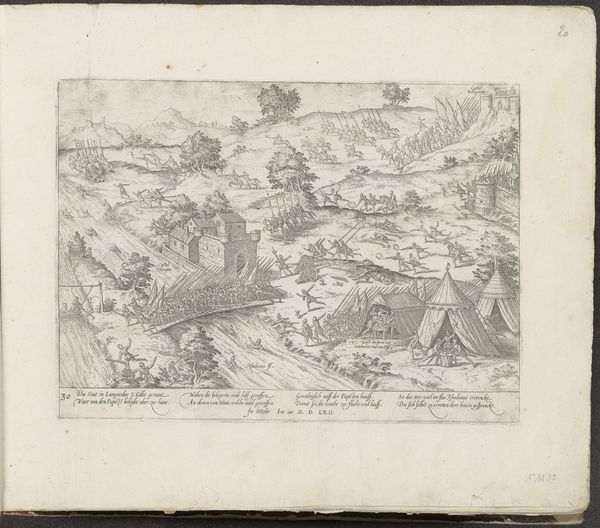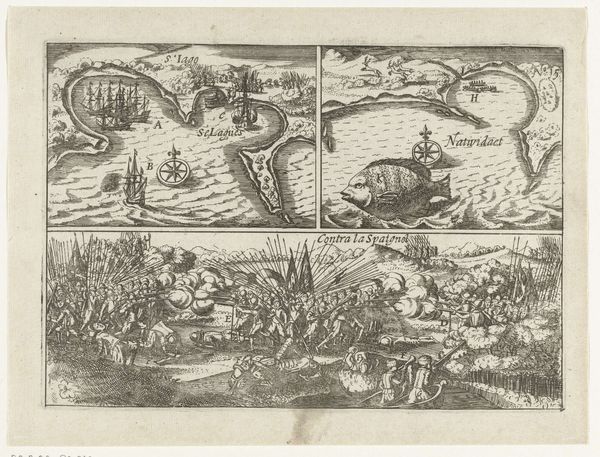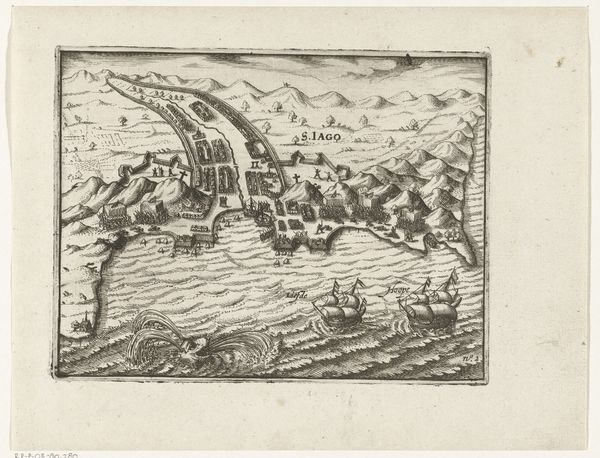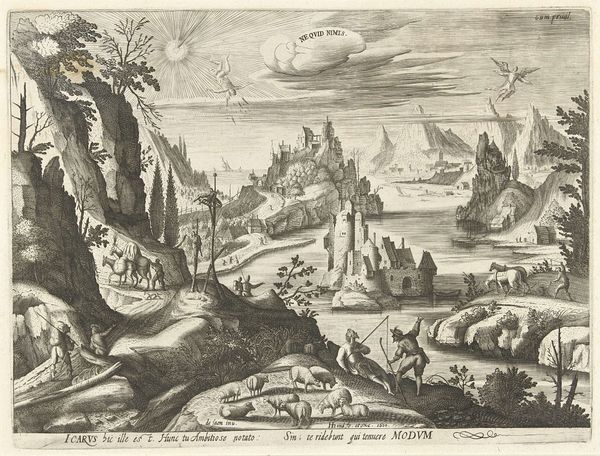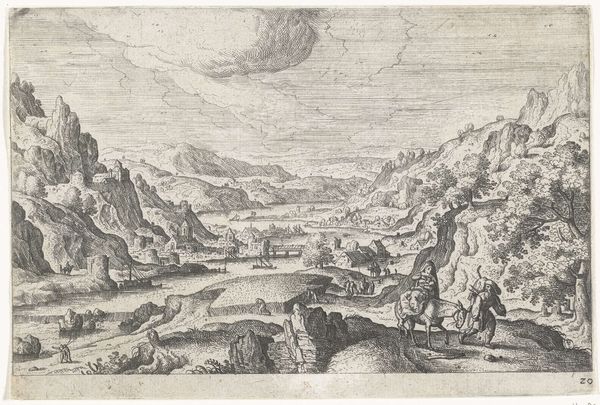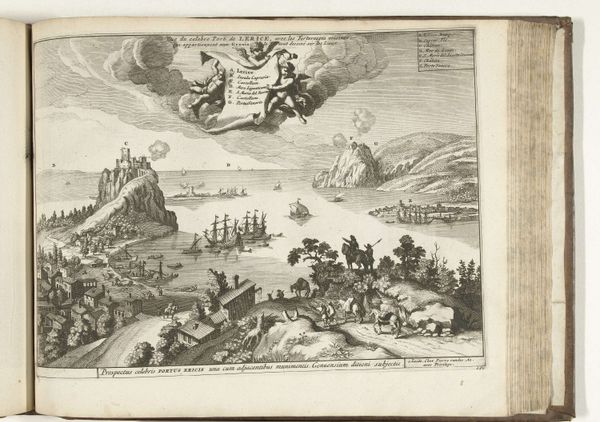
print, etching, engraving
#
baroque
# print
#
etching
#
old engraving style
#
landscape
#
cityscape
#
engraving
Dimensions: height 150 mm, width 215 mm
Copyright: Rijks Museum: Open Domain
Editor: We're looking at "De schepen in de baai van Valparaíso, 1615," an etching and engraving attributed to an anonymous artist, dating sometime between 1617 and 1646. It depicts ships in a bay, a scene framed within a sort of… curved cartographic boundary. I'm immediately struck by the unusual composition. What catches your eye? Curator: The most compelling element is precisely that framing device, the way the entire scene is contained. Observe how the artist uses that strong, arcing line to separate the familiar, the known world – suggested by the figures in the foreground – from the foreign, the representational space of the bay itself. It sets up a dynamic interplay between observer and observed, a dialectic, if you will, between reality and representation. Editor: So you're saying it's less about the scene itself and more about how the artist is presenting it? Curator: Indeed. The details within the bay—the ships, the land—are rendered with a degree of specificity, yet they exist within this highly artificial framework. Note how the composition leads your eye. It creates a very particular viewing experience. The use of line and the tonal contrasts are all deliberately deployed to focus your attention. Editor: I see what you mean about how the curved lines bring your eye toward the bay, where the ships and town are. How does the inclusion of what appears to be a compass rose contribute to the understanding of space within the engraving? Curator: The compass rose reinforces the print's cartographic function. What does it suggest to you, by its placement in the scene, its visual relationship to the ships and to the coastline? Editor: It suggests an element of navigation, a controlled mastery of space and travel over water. It's a strategic scene, not only artistic. I never thought I could spend so much time analyzing what at first seemed like a plain city scene. Curator: Precisely, the value lies not in the depiction itself, but rather in understanding the way in which it's depicted, how form informs meaning.
Comments
No comments
Be the first to comment and join the conversation on the ultimate creative platform.
